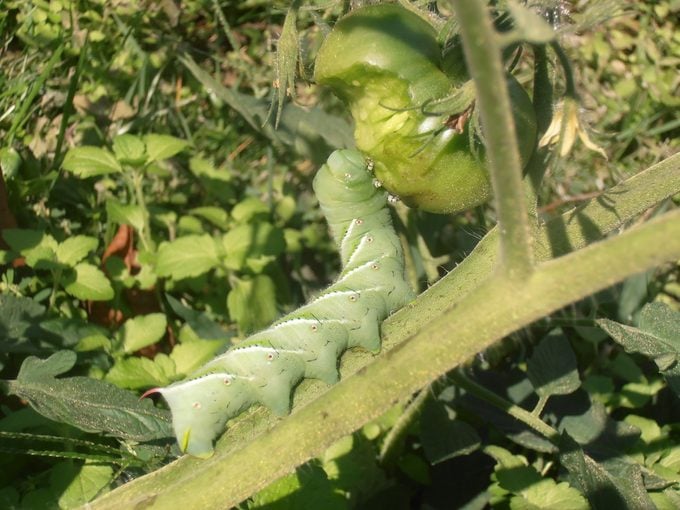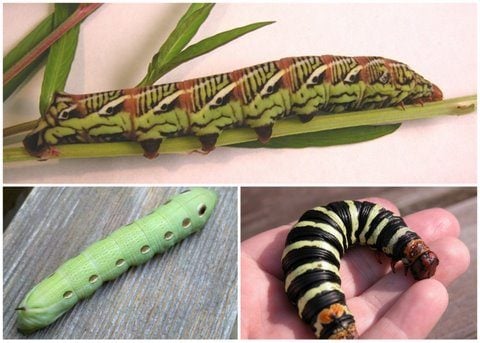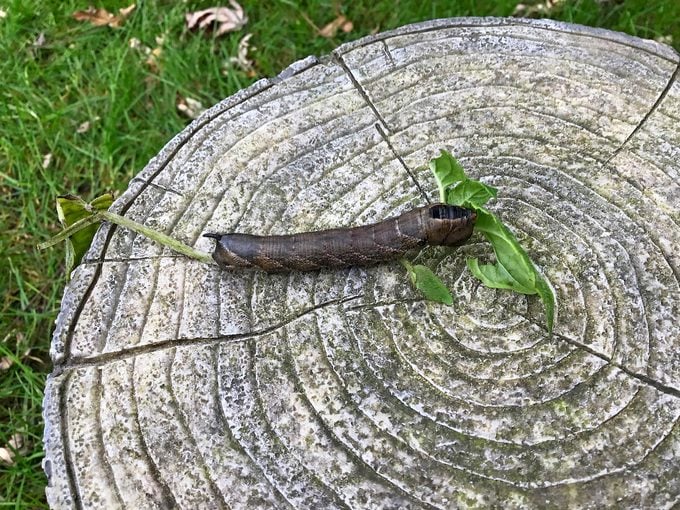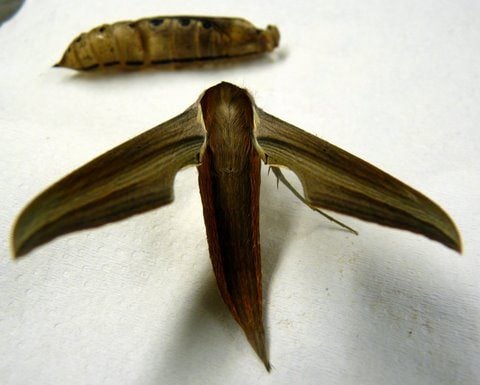See What a Sphinx Moth Caterpillar and Pupa Looks Like
Updated: Jun. 21, 2023
Here's how to identify sphinx moth caterpillars and sphinx moth pupa in your garden. Learn what to look for in the stages of the sphinx moth life cycle.
No matter how gorgeous the adults, sphinx moth larvae evoke a “Yuck!” from many folks, although not from birds, which eagerly devour them. When full-grown, sphinx moth caterpillars are about the size of your little finger and are smooth with a pointy horn at the tail end. It’s normal to overlook the unseemly larvae entirely unless one crosses your path as it goes off to pupate in late summer or early fall. Or you may only notice its presence when you see your tomato leaves devoured by a hungry sphinx moth caterpillar.
Meet 5 silk moths that might be in your backyard.
Sphinx Moth Caterpillar

Sphinx moth caterpillars often startle gardeners from their sheer size, often 4 to 5 inches in length and vividly-colored. Depending on the species, you’ll find them eating just about any kind of vegetation—including tomatoes. Yup, the dreaded tomato hornworm caterpillar is actually the larva of a sphinx moth.
Five-spotted hawk moth caterpillars, also known as tomato hornworms, are driven by voracious appetites to feast on tomato, tobacco and potato plants. Due to their size, these caterpillars can do a lot of damage, and gardeners sometimes view them as serious pests. To control tomato hornworms, pluck them off of your plants by hand.

Don’t overlook the lovely luna moth.
Hermit Sphinx Caterpillar

“What’s this caterpillar going to turn into?” asks Carla Sherack of Altura, Minnesota.
Kenn and Kimberly Kaufman: The large size and the little “horn” at the tail end are hints that this is one of the sphinx moths, also called hummingbird moths. This one is a hermit sphinx (Lintneria eremitus), known by the large black spot on the top of its head. The species is widespread in southern Canada and the eastern United States, and its larvae feed on leaves of basil, sage and other members of the mint family. The adult hermit sphinx moths have gray-brown wings with wavy lines, and you might see them hovering around flowers in the evening.
Here’s where you can spot a giant leopard moth.
Sphinx Moth Pupa
If you’re a gardener, chances are you may have come across a sphinx moth pupa at some point while digging in the dirt.
A sphinx moth pupa is quite big, several inches long and thicker than your thumb. The segmented end tends to wiggle when you touch it. The “handle” on the right side is actually a sheath protecting the developing proboscis—that certainly gives you an idea of the size of the moth that will emerge.
How do bugs, moths and butterflies hibernate?
Tersa Sphinx Moth
This tersa sphinx moth (above) is newly-emerged from its pupa casing, which you can see on the table behind it. Tersas are night-flyers, feeding on nectar.
Next, learn how to identify a hummingbird clearwing moth.

